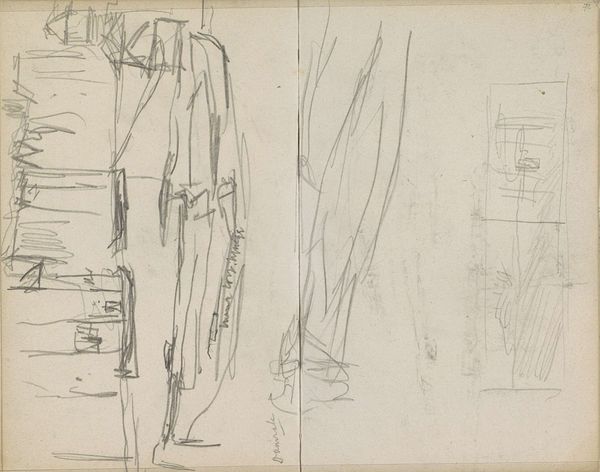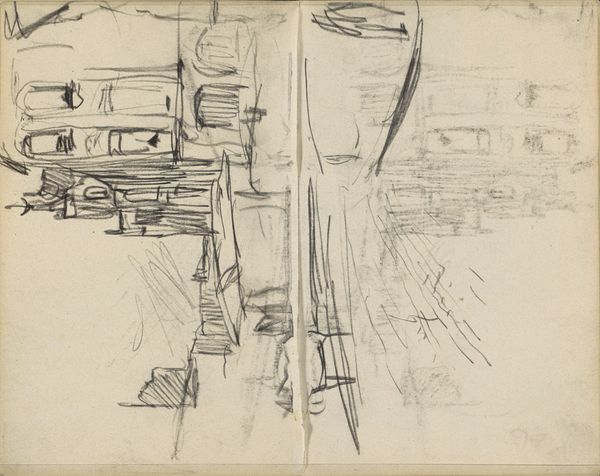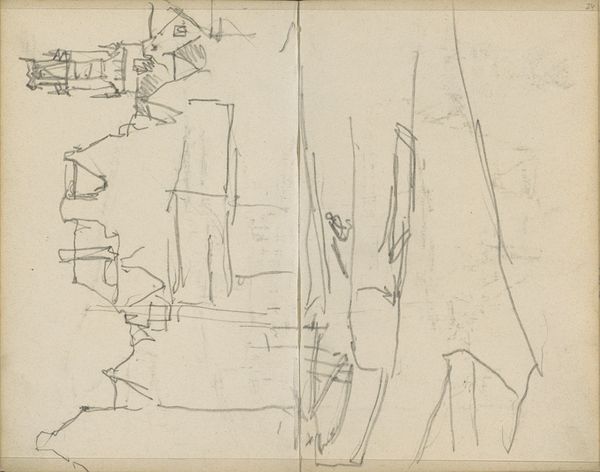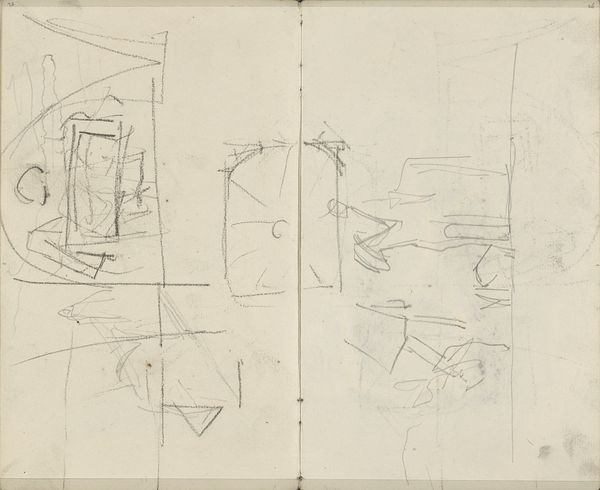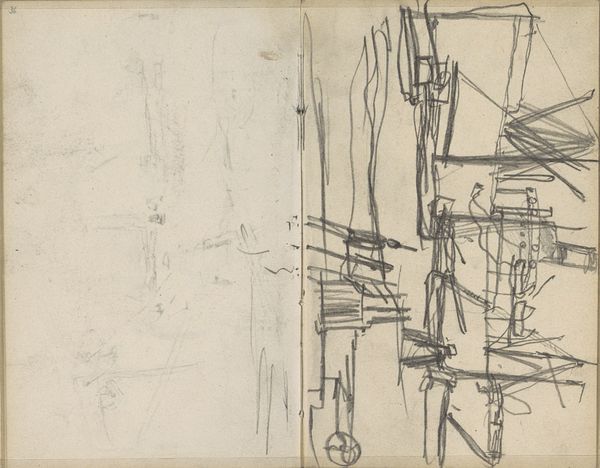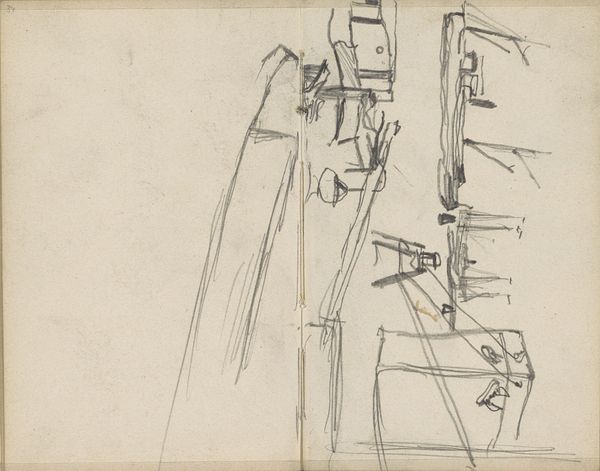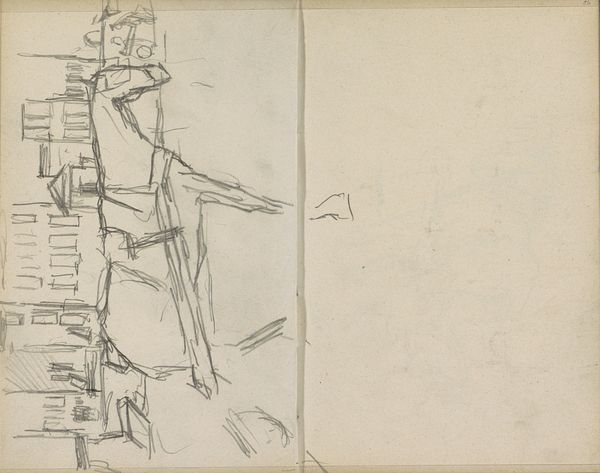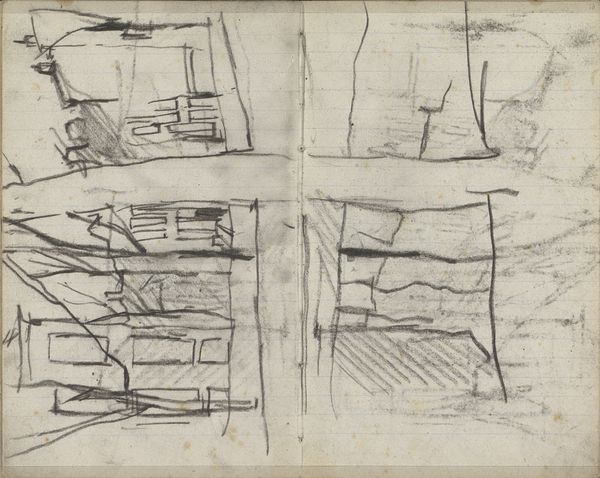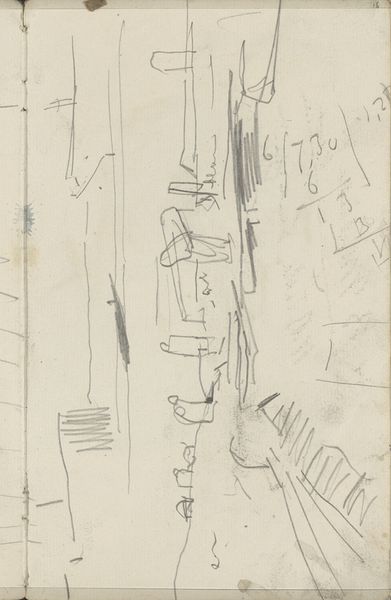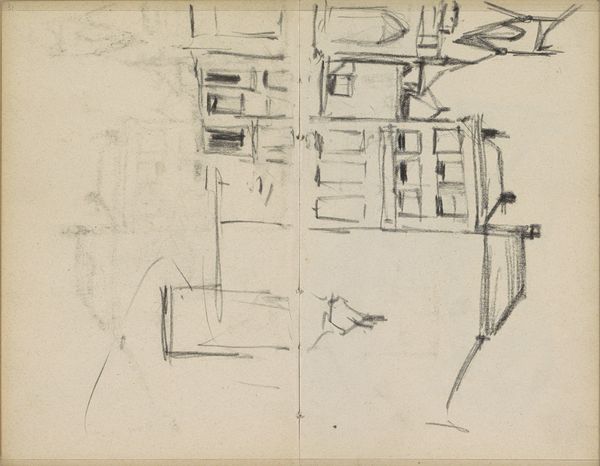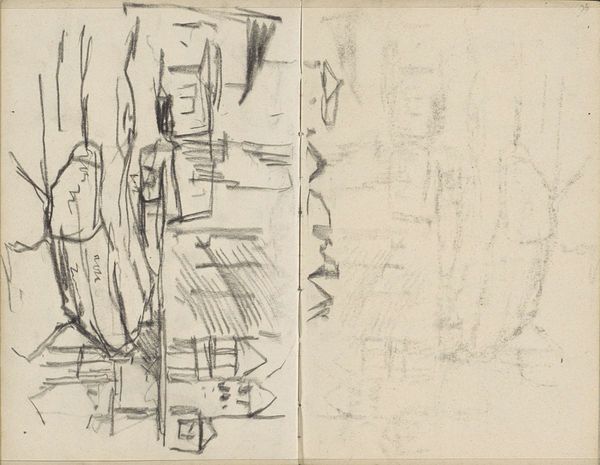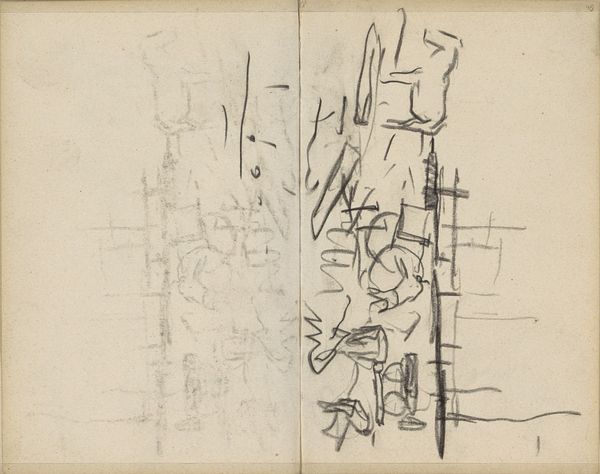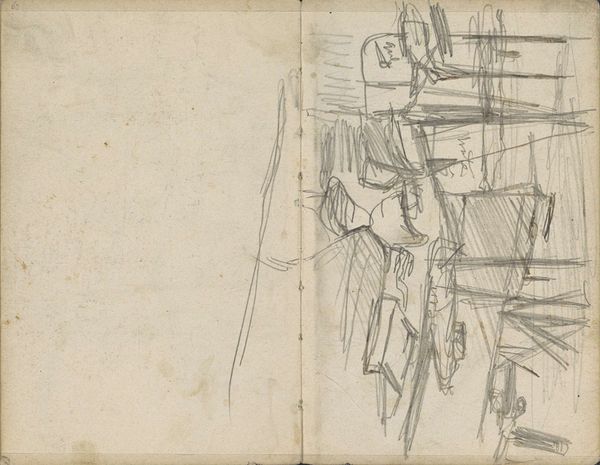
Gezicht op de Noordermarkt te Amsterdam, ter hoogte van de Westerstraat c. 1886 - 1923
0:00
0:00
Copyright: Rijks Museum: Open Domain
Editor: This is "Gezicht op de Noordermarkt te Amsterdam, ter hoogte van de Westerstraat," a pencil drawing by George Hendrik Breitner, made sometime between 1886 and 1923. It’s a quick sketch, and I get a sense of hustle and bustle despite the minimal detail. What can you tell me about it? Curator: This sketch provides a window into Breitner's process and, more broadly, into the social fabric of Amsterdam at the turn of the century. Breitner, a contemporary of Van Gogh, was deeply engaged with representing urban life and the working class. This particular sketch, raw and unrefined, offers a glimpse into the daily lives of ordinary people, capturing a fleeting moment in their existence. Editor: It's so sparse, though. Hard to see the 'social fabric,' as you say. Curator: Precisely because of its sparse nature, it directs our focus. Think about the context: Amsterdam was undergoing rapid industrialization and urbanization. Markets like Noordermarkt were vital social hubs, places of exchange but also spaces where class distinctions were blurred. Editor: So the sketch is almost a political act of witnessing? Curator: In a way, yes. Breitner wasn’t just passively observing; he was actively choosing to document these scenes. He gives visibility to the everyday struggles and resilience of the working class that may challenge the established political structure of the time. How do you think that makes it more radical than if he were painting a portrait of wealthy merchants? Editor: Good point. The subject matter becomes the statement, then, not just the style. Curator: Exactly. And think about who usually got to be portrayed or remembered at that time? By choosing this view, he is empowering a marginalized segment of society. Editor: I never thought a simple sketch could be so layered. It definitely gives me a new appreciation for seeing art as a form of activism. Curator: Indeed, art often whispers truths that other forms of communication may not. And these voices should be heard.
Comments
No comments
Be the first to comment and join the conversation on the ultimate creative platform.
